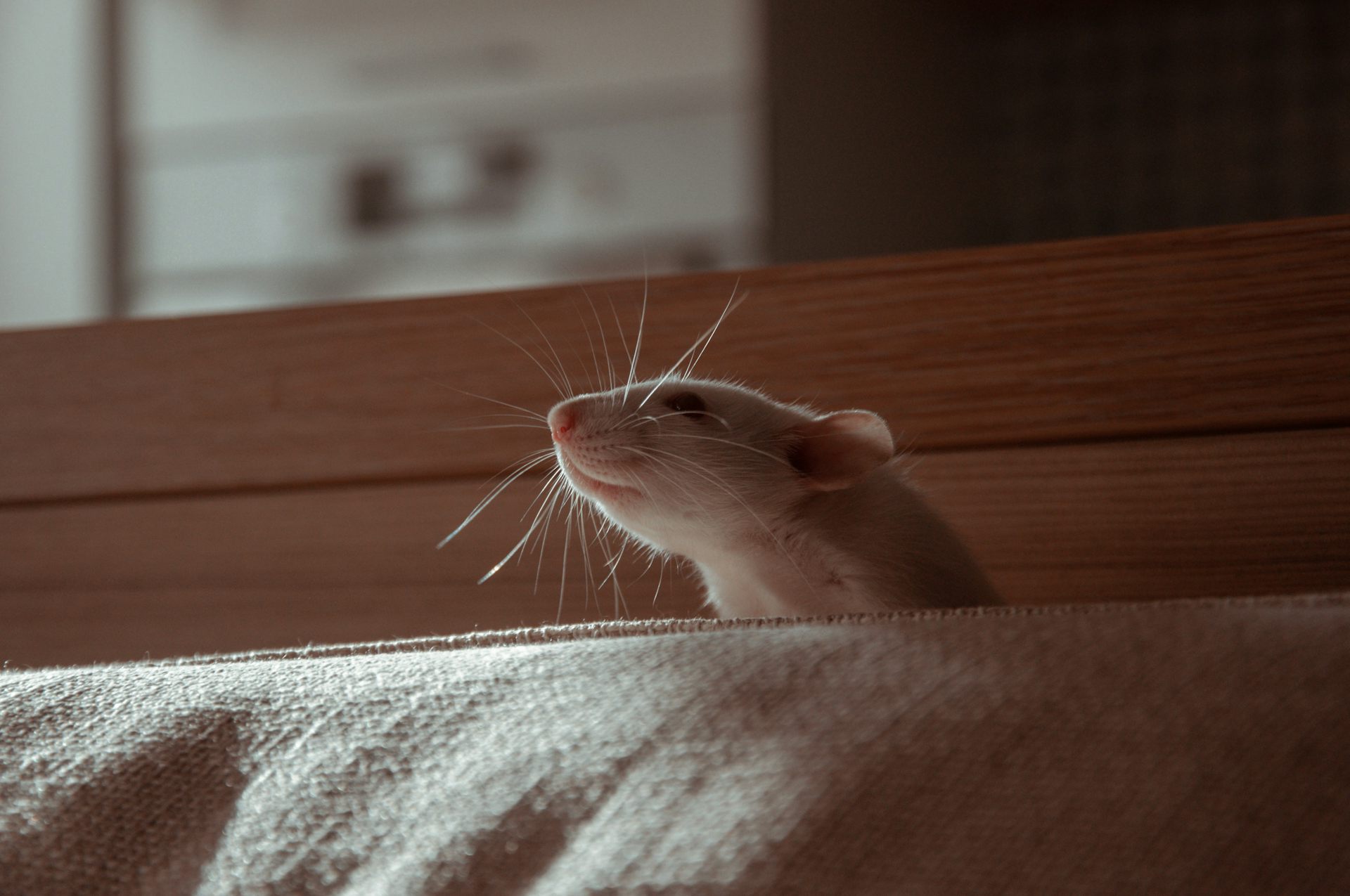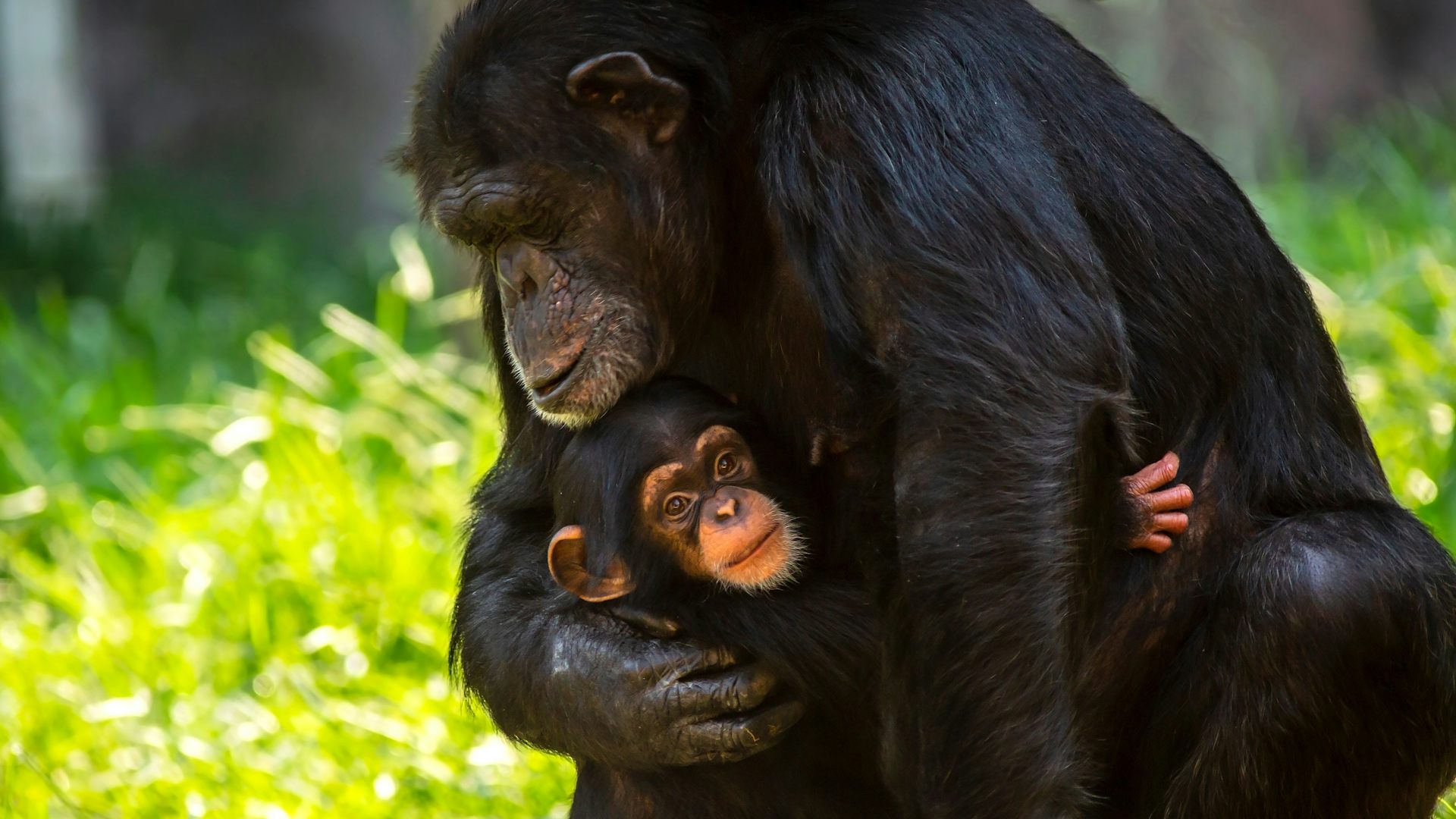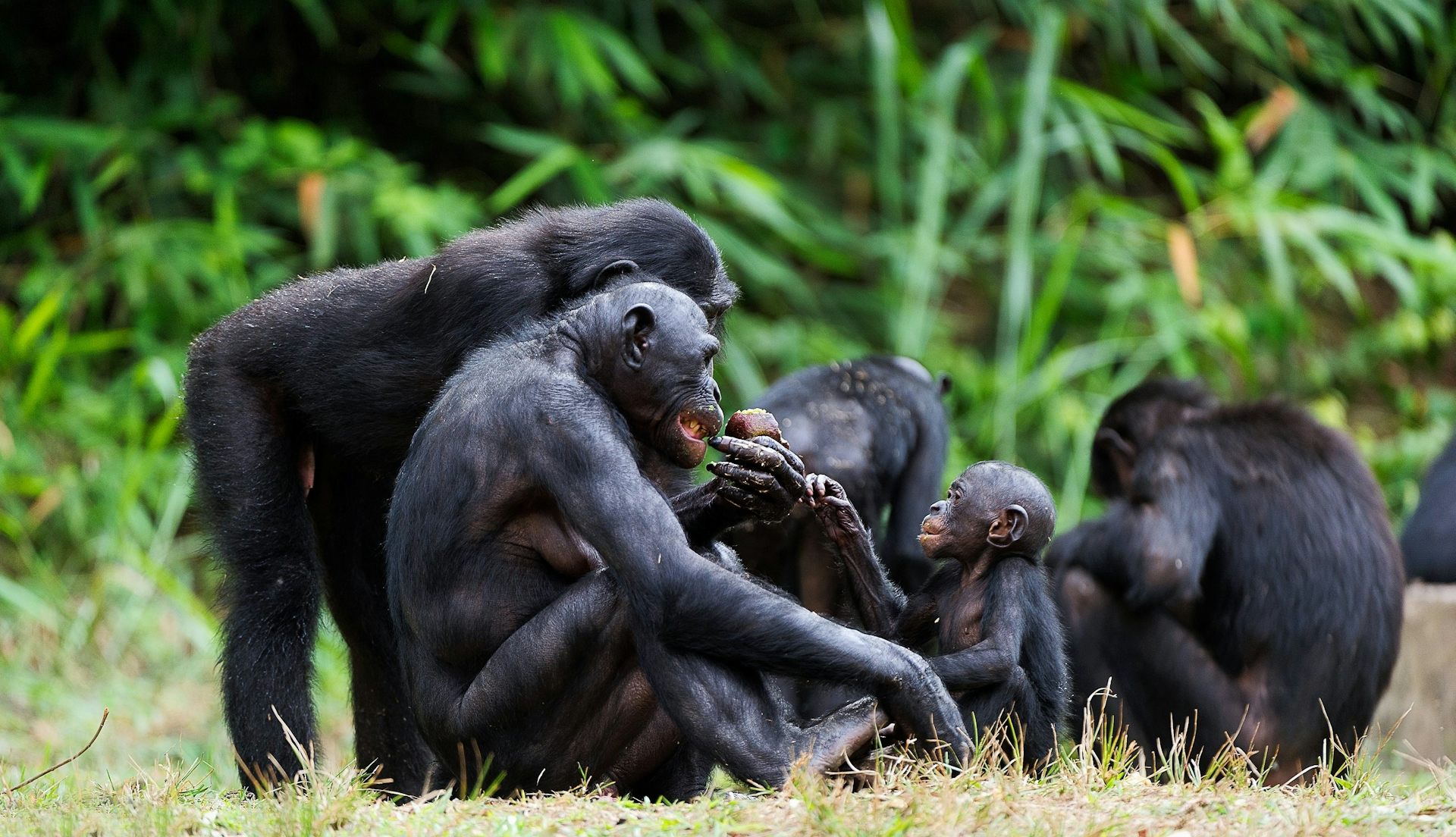Creationism in Crisis
Scientists Explain the 'Domestication Syndrome' as an Evolutionary Process
Scientists Explain the 'Domestication Syndrome' as an Evolutionary Process
Skull of a grey wolf and a chihuahua
Creationism in Crisis
Scientists Explain the 'Domestication Syndrome' as an Evolutionary Process
Scientists Explain the 'Domestication Syndrome' as an Evolutionary Process
Homo erectus and 'self-domesticated' modern human
© Linda Bucklin/shutterstock
Why do animals living with humans evolve such similar features? A new theory could explain 'domestication syndrome'
In an open access paper published a few days ago in Proceedings of the Royal Society B two scientists from The Australian National University, Acton, ACT, Australia, Ben Thomas Gleeson and Laura A. B. Wilson attempted to reconcile conflicting scientific opinions regarding the evolution of features common to many domesticated species, collectively known as the 'domestication syndrome'.
The results will upset Creationists for two main reasons:
- The scientists are in no doubt that the cause is an evolutionary process, albeit with one in which humans are the selectors and fitness is suitability for human exploitation, giving the lie to the absurd claim that the Theory of Evolution by natural selection is a theory in crisis.
- Creationists believe all animals were created by a perfect, omniscient god specifically for humankind to serve our needs. If that were true, there would be no need to improve them for our purpose by the process of taming, domestication and selective breeding, since they would have been tame and perfectly designed for our purposes already, so there would be no 'domestication' syndrome'.
- Tameness and calmness. All domestic animals are tamer and calmer than their wild counterparts.
- Shorter noses and flatter faces.
- Smaller teeth.
- More fragile skeletons.
- Smaller brains.
- Different colours in skin, fur, and feathers.
Similar features are also found in some wild species, for example, bonobos, possibly because they have undergone a form of self-domestication since they diverged from the common chimpanzee. It is also likely that humans have undergone a similar process of self-domestication.
The research is explained by the authors in an article in The Conversation, reprinted here under a Creative Commons licence. The article has been reformatted for stylistic consistency. The original can be read here.

Why do animals living with humans evolve such similar features? A new theory
could explain ‘domestication syndrome’
Source:
Luz Rovira / Flickr,
CC BY-NC-ND
Ben Thomas Gleeson, Australian National University and Laura A. B. Wilson, Australian National University
In the 19th century, Charles Darwin was one of the first to notice something interesting about domesticated animals: different species often developed similar changes when compared to their ancient wild ancestors.
But why would a host of seemingly unrelated features repeatedly occur together in different domesticated animals?
Scientists call this collection of shared changes “domestication syndrome”, and the reason it occurs is still hotly debated.
In a new paper in Proceedings of the Royal Society B, we argue that currently popular explanations aren’t quite right – and propose a new explanation focused on big changes in the way domesticated animals live. Along the way, our theory also offers insights into the unexpected story of how we humans domesticated ourselves.
Shared changes under domestication
The most commonly shared change is tamer behaviour. All domesticated animals are calmer than their wild ancestors naturally were.
That’s probably not very surprising. Ancient humans would’ve preferred docile animals, and likely selected breeding stock for tameness.
But other common changes don’t seem at all useful to humans – or to the animals themselves. Like shorter faces, smaller teeth, more fragile skeletons, smaller brains, and different colours in skin, fur, and feathers.
Not all domesticated animals share all these features. For example, dogs have many, and camels only a few.
But each change occurs in more than one domesticated species.
Wild self-domestication
Surprisingly, very similar changes sometimes also appear in wild animals, leading some scientists to think they “self-domesticated” in some way.
The bonobo (a great ape closely related to the chimpanzee) is one famous example of an animal that has undergone these changes without human intervention. Urban foxes are another.
Wild self-domestication is most common in isolated sub-populations, like on islands, and may overlap with a similar phenomenon known as the “island effect”.
Perhaps more surprisingly, modern humans also show features of domestication syndrome, when compared to our ancient ancestors. This suggests we also self-domesticated.
Some scientists argue these changes made us more sociable, helping us to develop complex languages and culture.
So a clearer understanding of domestication syndrome in animals might improve our knowledge of human evolution too.
What causes domestication syndrome?
In recent years, two main possible explanations for domestication syndrome have dominated scientific discussion.
The first suggests it was caused when ancient humans selected animals for tamer behaviour, which somehow triggered all of the other traits too.
This idea is supported by a famous long-running Russian fox-breeding experiment which began in 1959, in which caged foxes were selected only for tameness but developed the other “unselected” features as well.
More than selection for tameness
However, our new research suggests these two ideas oversimplify and obscure the complex evolutionary effects at play.
For one thing, there are problems with the famous Russian fox experiment. As other authors have noted, the experiment didn’t begin by taming wild foxes, but used foxes from a farm in Canada. And these pre-farmed foxes already had features of domestication syndrome.
What’s more, the experimenters didn’t only select for tameness. They bred other foxes for aggression, but the aggressive foxes also developed domestication syndrome features.
And in a similar experiment conducted in the 1930s, caged rats developed the same common changes, including tamer behaviour, despite no deliberate selection for tameness, or aggression.
So, it seems domestication syndrome might not be caused by humans selecting animals for tameness. Instead, it might be caused by unintended shared effects from the new domestic environment.
A new hypothesis for domestication syndrome
Crucially, it’s not just new forces of selection, such as a human preference for tameness, that matters. The removal of pre-existing selection is just as important, because that’s what naturally shaped the wild ancestors in the first place.
For example, domesticated animals are often protected from predators, so wild traits for avoiding them might be lost. Competition for mating partners is also often reduced, so wild reproductive features and behaviours could decline, or disappear.
Domesticated animals are also usually reliably fed. This might alter certain features, but would certainly change natural metabolism and growth.

Caged rats have also been seen to develop signs of domestication
syndrome.
Oxana Golubets / Unsplash
Our new hypothesis highlights four ways that selection shaping wild animals is often disrupted by domestication. These are:
-
class="dbl1">
- less fighting between males
- fewer males for females to choose between
- more reliable food and fewer predators, and
- elevated maternal stress, which initially reduces the health and survival of offspring.
So how did we domesticate ourselves?
Well, one current theory is that sociable “beta males” began cooperating to kill alpha bullies. This changed how competition worked among males, leading to fewer big and aggressive males.
But our hypothesis suggests other effects also played a role. For example, our early ancestors evolved the capacity for shared infant care. In our chimpanzee relatives today, sharing care of an infant would likely trigger extreme stress for the mother – but our ancestors adapted to this increased stress and gained an effective survival strategy.

Adapting to the increased maternal stress that accompanies separation from
infants (either for shared care or domestication) may be one of the
drivers of ‘domestication syndrome’.
Shutterstock
Whatever the specific drivers in each species, recognising multiple selective pathways better explains the domestication syndrome, and reaffirms the complexity of evolutionary effects shaping all life on Earth.
Ben Thomas Gleeson, Doctoral Candidate, Australian National University and Laura A. B. Wilson, ARC Future Fellow, Australian National University
This article is republished from The Conversation under a Creative Commons license. Read the original article.
AbstractPerhaps a Creationist would address the questions posed above, namely:
Altered neural crest cell (NCC) behaviour is an increasingly cited explanation for the domestication syndrome in animals. However, recent authors have questioned this explanation, while others cast doubt on whether domestication syndrome even exists. Here, we review published literature concerning this syndrome and the NCC hypothesis, together with recent critiques of both. We synthesize these contributions and propose a novel interpretation, arguing shared trait changes under ancient domestication resulted primarily from shared disruption of wild reproductive regimes. We detail four primary selective pathways for ‘reproductive disruption' under domestication and contrast these succinct and demonstrable mechanisms with cryptic genetic associations posited by the NCC hypothesis. In support of our perspective, we illustrate numerous important ways in which NCCs contribute to vertebrate reproductive phenotypes, and argue it is not surprising that features derived from these cells would be coincidentally altered under major selective regime changes, as occur in domestication. We then illustrate several pertinent examples of Darwin's ‘unconscious selection' in action, and compare applied selection and phenotypic responses in each case. Lastly, we explore the ramifications of reproductive disruption for wider evolutionary discourse, including links to wild ‘self-domestication' and ‘island effect’, and discuss outstanding questions.
Gleeson, T.; Wilson, Laura A. B. (2023)
Shared reproductive disruption, not neural crest or tameness, explains the domestication syndrome
Proceedings of the Royal Society B 290(1995), 20222464. DOI: 10.1098/rspb.2022.2464
Copyright: © 2023 The authors.
Published by the Royal Society. Open access
Reprinted under a Creative Commons Attribution 4.0 International license (CC BY 4.0)
- Why did animals need domesticating and adapting to suit our needs, in the first place, if they were created for our convenience by an omnipotent, omniscient creator who should have foreseen what we would be using them for?
- Why do the scientists seek to explain the 'domestication syndrome' in terms of an evolutionary process, if as the cult leaders claim, the Theory of Evolution, is being abandoned by mainstream biologists in favour of their magical theory which includes an unproved supernatural entity, so ceases to be science?




No comments :
Post a Comment
Obscene, threatening or obnoxious messages, preaching, abuse and spam will be removed, as will anything by known Internet trolls and stalkers, by known sock-puppet accounts and anything not connected with the post,
A claim made without evidence can be dismissed without evidence. Remember: your opinion is not an established fact unless corroborated.